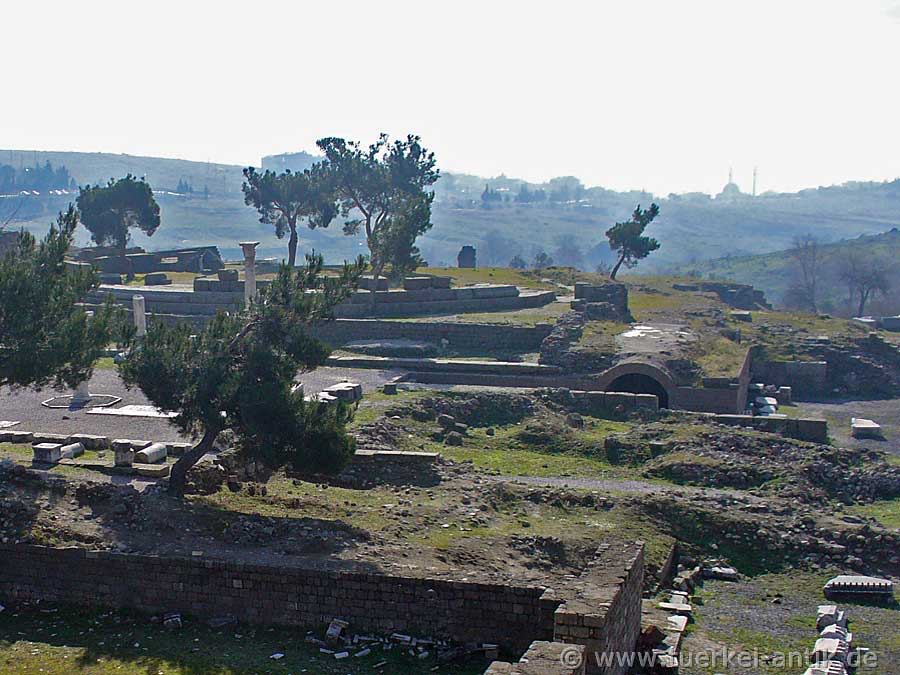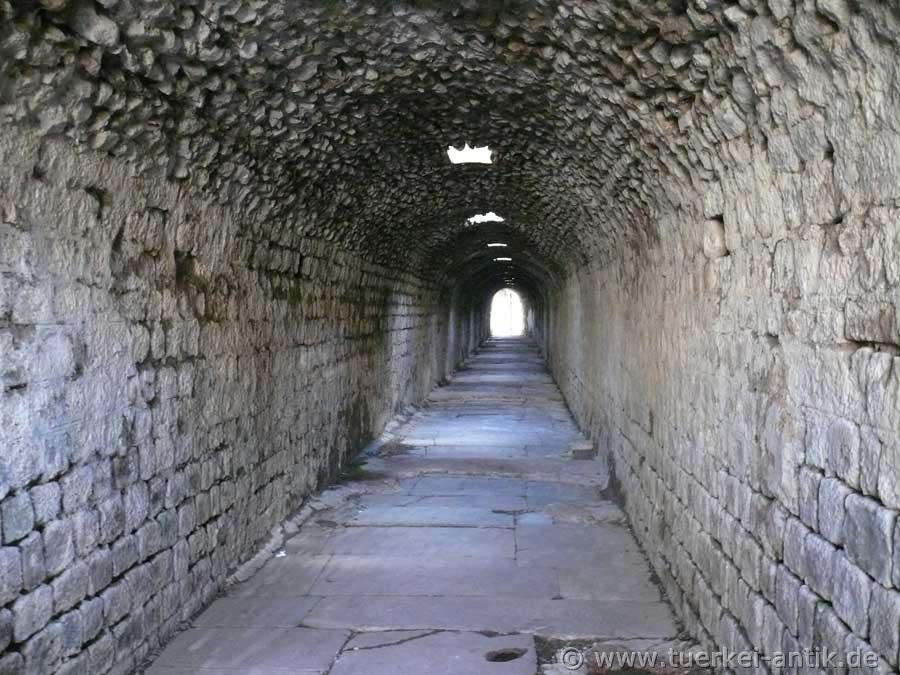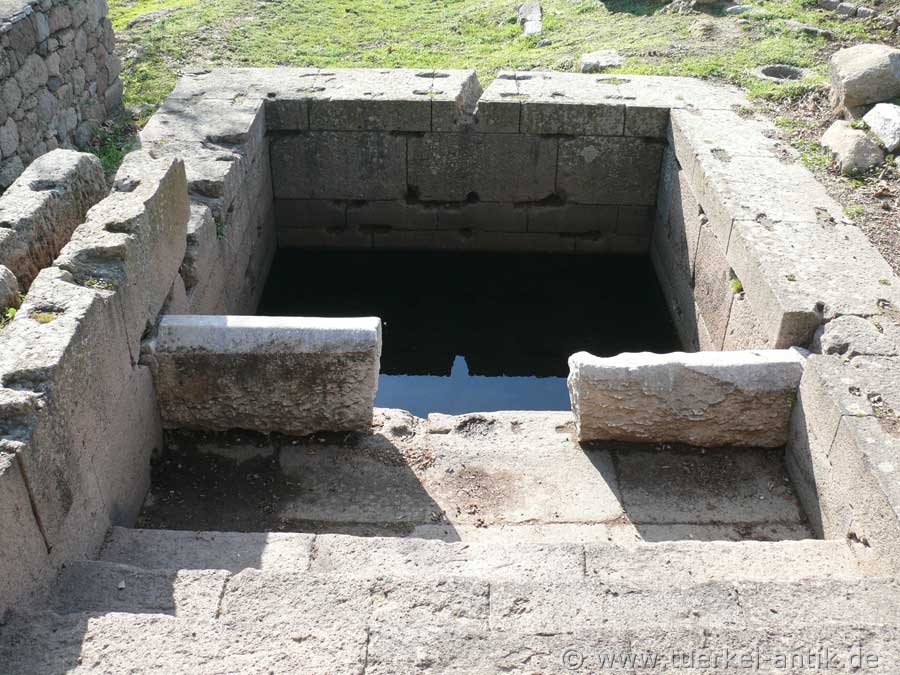 |
| Sanctuary of Asclepius Pergamon | |||
|
|
|
||
| The large forecourt with the Propylon at the end of Via Tecta | |||
|
The cult of the god of healing art, Asklepios, was established in Pergamon as early as in the 4th century BC and was initially hereditary in the family of a certain Archias, the founder of the cult. Under Eumenes II he was elevated to a state cult. The cult enterprise consisted mainly of nature healing practices (water and mud treatment, circuits, deep sleep, dream interpretation) connected with the religious activity of a large pilgrimage center.
|
|||
|
|
|||
| The via tecta | |||
|
Access to the Asklepieion was made possible by an 820-metre-long magnificent road which, at least in its first part, had been passed through a gate building forming the entrance when it was vaulted over via tecta. Columned halls accompanied the up to 18.50 meter wide road on both sides. |
|||
|
|
|||
| An area with Hellenistic buildings | |||
|
In the valley of the later Asklepieion some pottery fragments of pre-archaic and archaic times were discovered.
The few preserved remains of the oldest buildings, on the other hand, date from the late 5th century B.C. and do not permit any judgement on the appearance of the place of worship.
Around the middle of the 3rd century B.C., the appearance of the Shrine changed significantly: for the first time, the buildings were aligned according to a uniform concept in the four main cardinal points, the buildings in the center of the Shrine became denser and the size of the individual buildings increased.
|
|||
|
|
|||
| The area of the cult place | |||
|
The Roman sanctuary was a courtyard surrounded by buildings and halls measuring 110 × 130 metres, with a large forecourt and a propylon in front of it to the east, where the state road ended. |
|||
|
|
|||
|
|
|||
| In the spa house | |||
|
|
|||
|
On the south-east corner of the area stood a two-storey round building with an outside diameter of almost 60 metres, the upper floor of which was divided into inwardly facing semicircular niches.
|
|||
|
|
|||
|
|
|||
|
The underground passage to the holy spring |
|||
|
|
|||
|
|
|||
|
The holy spring |
|||
|
|
|||
|
|
|||
|
The theatre and the columned hall on the west side |
|||
|
The south, west and north sides of the courtyard were lined with columned halls, north of the Nordhalle and in its western area was a Roman theatre with 29 rows of marble seats that could hold around 3,500 spectators. It has, as is typical for Roman theatres, a strictly semicircular cavea. Other buildings or facilities of the Shrine were used for drinking and bathing cures. |
|||
 |
|||
|
South of Propylon and thus at the edge of the courtyard was the Roman temple for Asklepios Soter or Zeus Soter Asklepios. The building is a smaller replica of the Pantheon in Rome and, with a dome diameter of 23.85 meters at the time of its construction, had the largest brick dome of the Roman Empire and probably even of the entire world. |
|||
| Photos: @chim | |||
| Translation aid: www.DeepL.com/Translator | |||
| Source: Wikipedia and others | |||
|
|
|||



